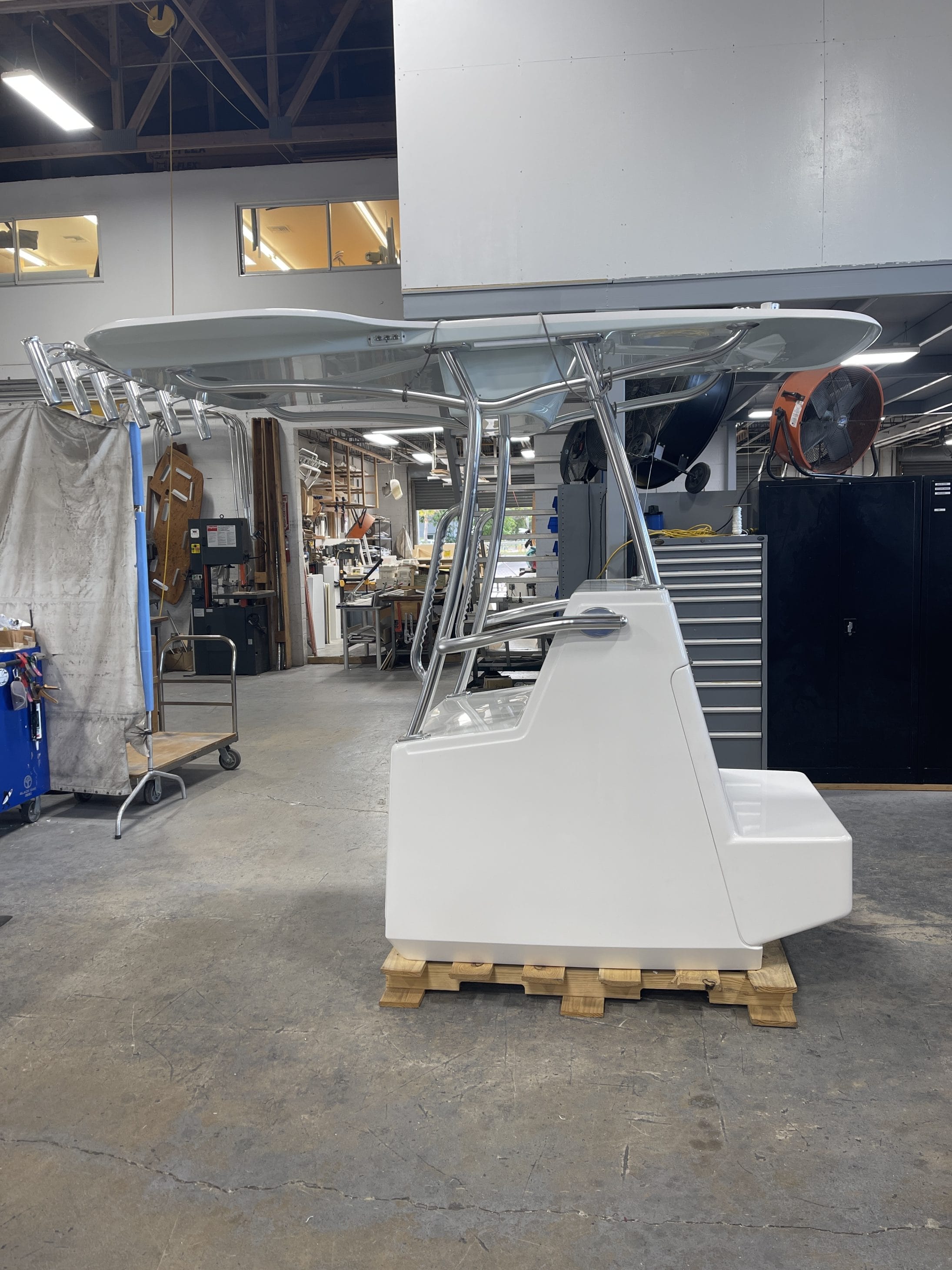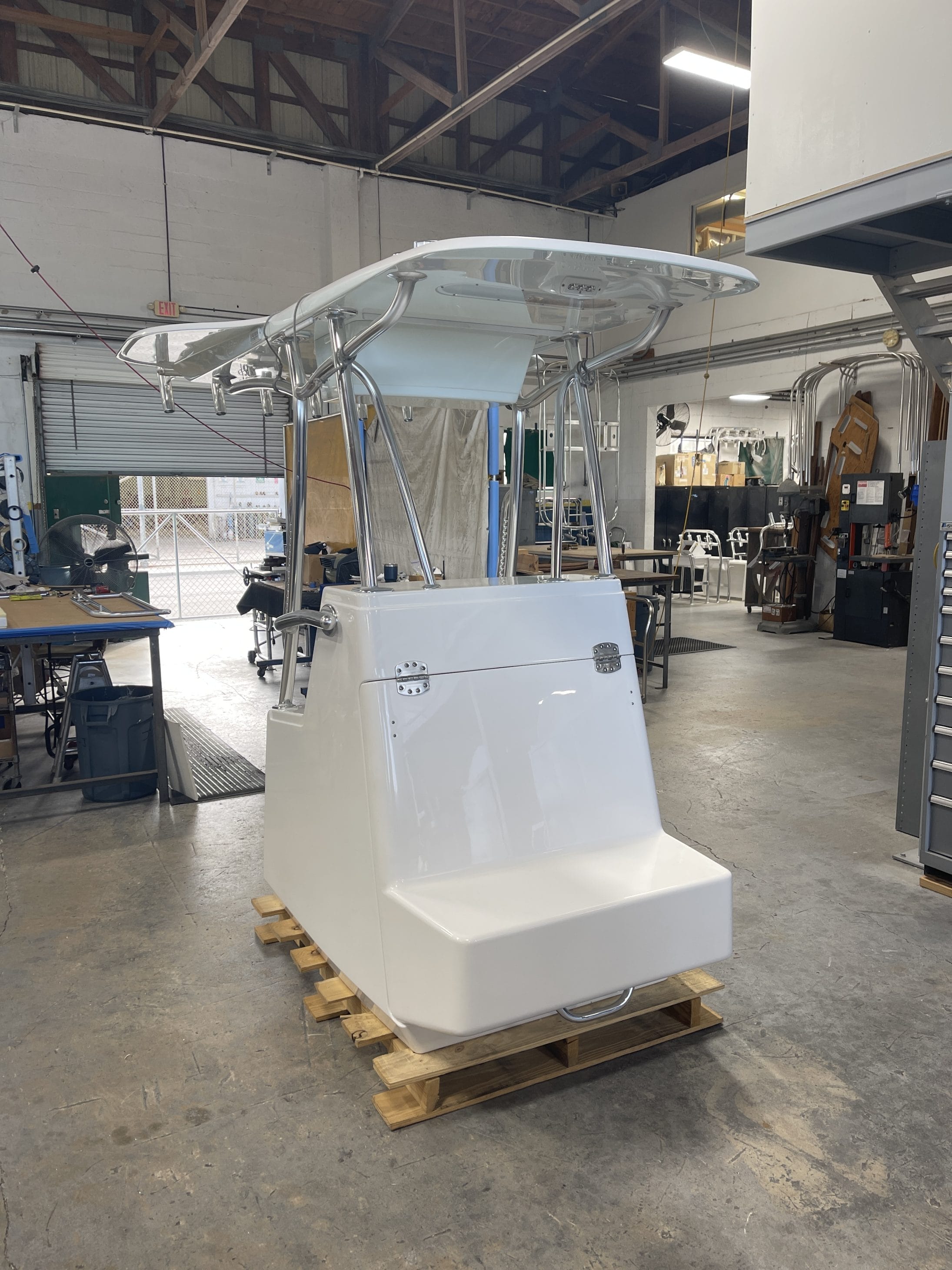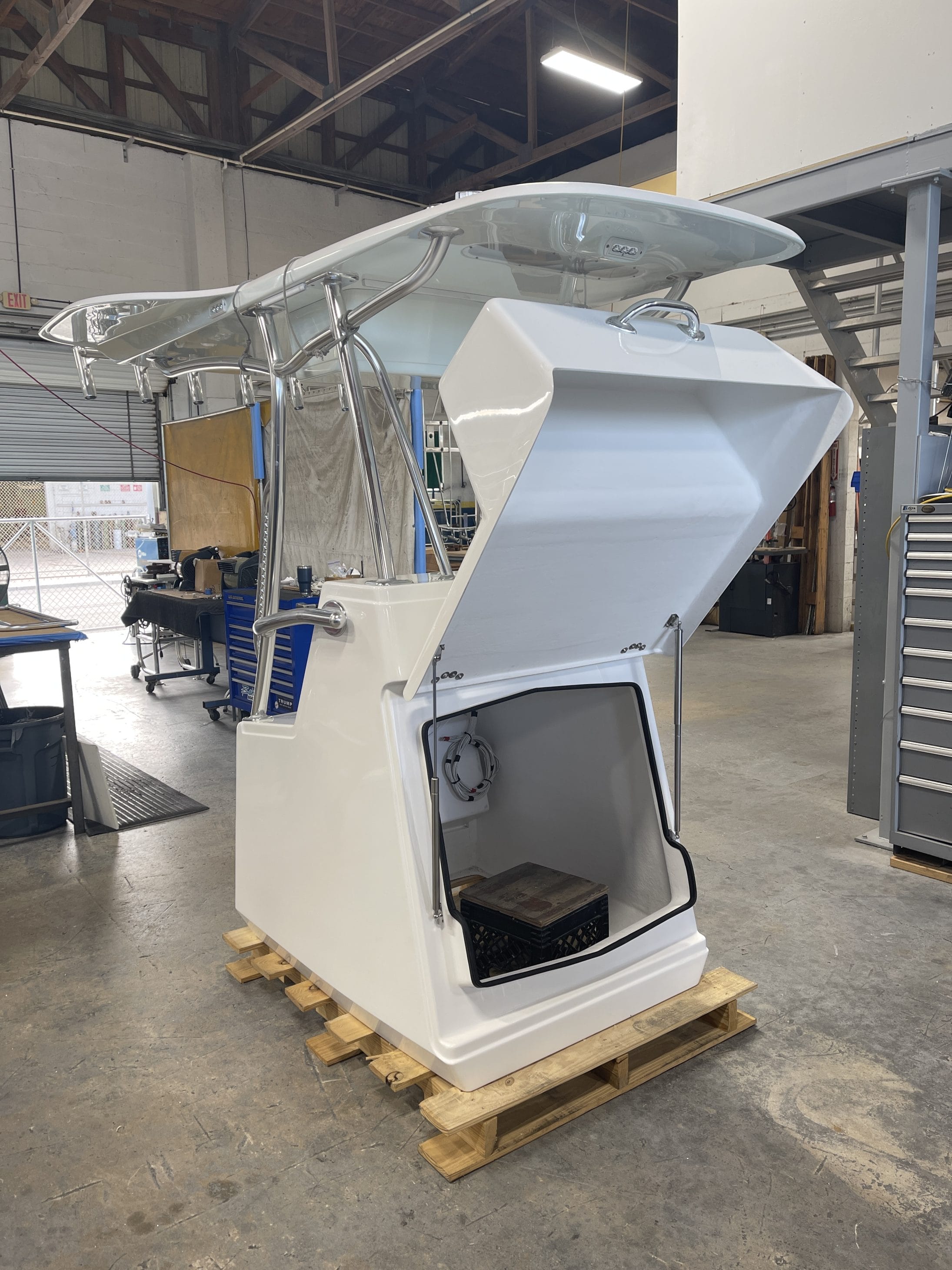The Nature of Fiberglass
An Article by Birdsall Marine Designs' Own Zed Bennett
Although we all use the generic term “fiberglass” to refer to all the material that most of our boats are made of, the proper term for the construction material used in most modern boats is FRP, or Fiber Reinforced Polymer, construction. What makes this a better term is the fact that it more accurately describes the synergy inherent to composite materials, and fiberglass fabrics are only one component in what is really a composite.
The term composite is generally defined as “something composed of multiple elements”. In the case of FRP construction, the glass fiber, or whatever type of reinforcing fiber that may be involved, is used in conjunction with a polymer matrix. It works the same way that concrete/steel construction does: the steel takes most of the tensile loads applied, while the concrete matrix serves to not only hold the steel “in column”, but also to assume any primary compressive loads involved. By themselves, the fibers involved in boat construction – whether they be fiberglass, carbon, or Kevlar – have no more natural dimensional stability than the T-shirt that you might be wearing. When potted into a polymer matrix of some sort, the fibers assume a whole different load bearing potential. The resulting combination of materials is stronger than any single one alone! This is “synergy”.
In FRP construction, structural strength is dependent on the physical characteristics of all of the elements involved. For example: filaments are principally rated by what kind of tensile load they can survive without failure. In composite engineering the next consideration is how far they can stretch & still return to their normal dimension. This is called “elongation” and is expressed as a percentage of dimension. The loads that resin matrices might experience are determined the same way, but with a bit more attention given to compression forces. When engineering with FRP materials, it is important that consideration is given to how closely both the fibers and resin matrix’s various physical properties complement each other. Structural magic is achieved when the various materials involved compliment each other.
Special consideration needs to be given to the fact that FRP construction displays its load bearing capabilities in a primarily 2D linear fashion. Materials like metals are considered to be isotropic. This means that they display the same physical characteristics in every direction of length, width, and thickness. In comparison, FRP materials are anisotropic, which means that their ability to assume loads is fundamentally confined to two dimensions on the same plane. This becomes important when selecting the resin matrix to be used. A common problem with FRP structures is delamination between layers of fabric, which can occur when panels are flexed. You can easily see the potential shearing forces involved if you take a fairly thick soft cover book and bend it downward over your knee. The sideways shifting of the pages serve as a good illustration of what happens when a structure deforms. The top pages will be trying to stretch, while the bottom pages are trying to compress, with the two forces meeting in the middle, resulting in a shearing effect. When flexing becomes too great, the various layers of fabric can separate from each other, or delaminate. This is why the physical characteristics of the resin matrix are so important. The matrix has to be able to resist the shearing forces between layers that might be encountered in order to prevent delamination between the various plies!
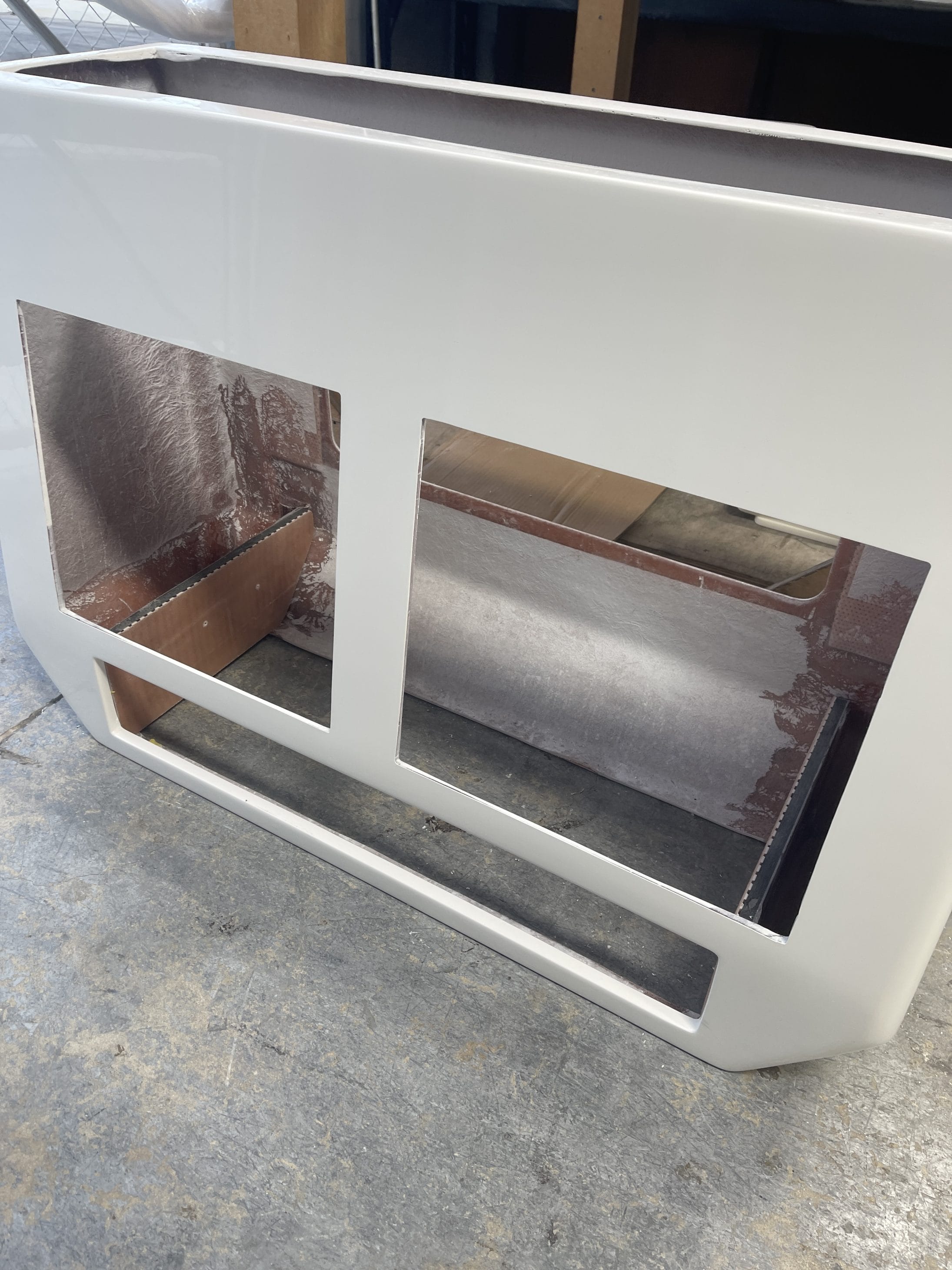
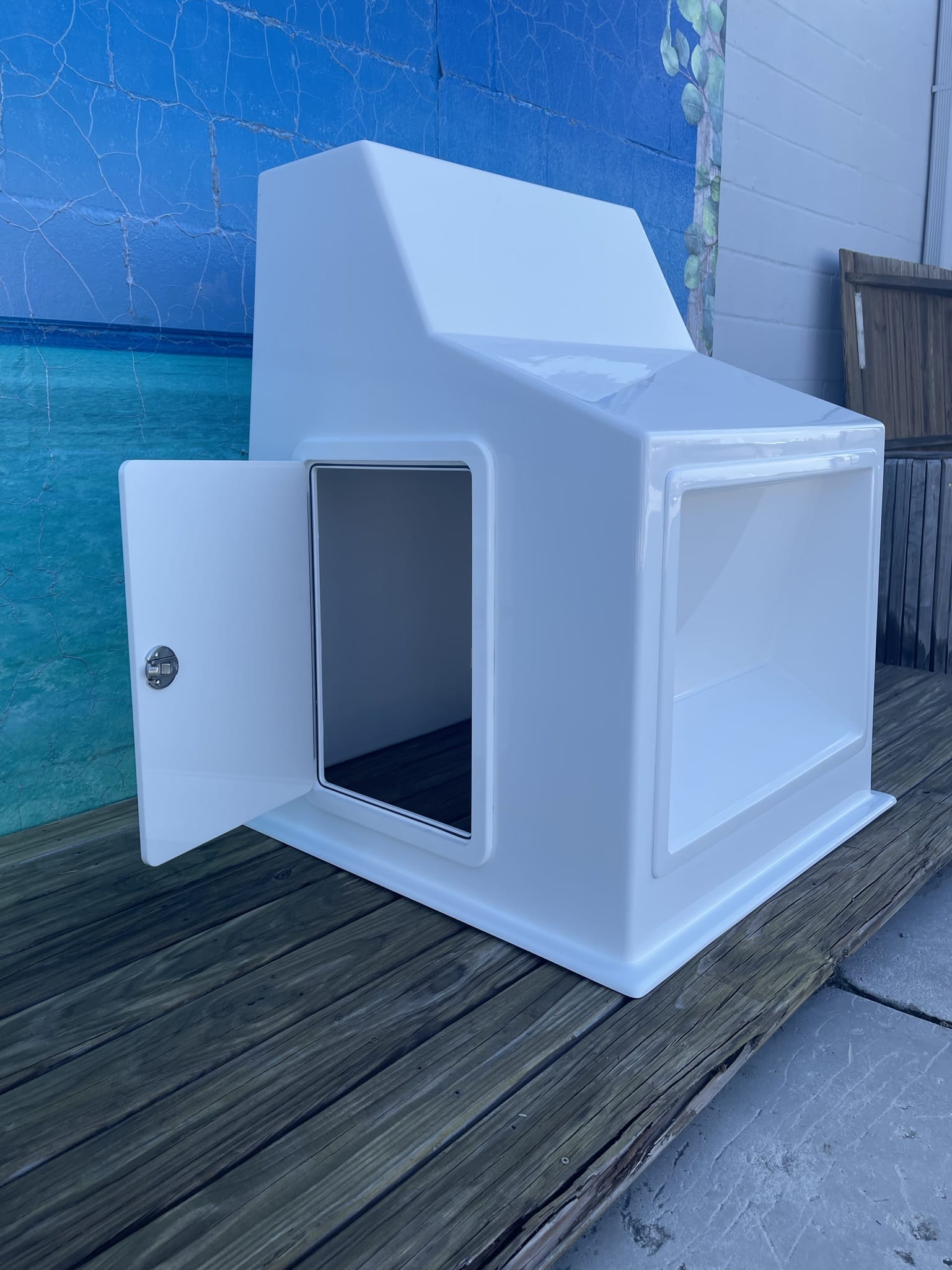
Fabricators using FRP materials currently enjoy a large menu of polymer resins to use on their structures. These resins display a variety of elongation, compression, and bonding strengths that allow the clever engineer to solve many strength and durability problems inherent to complex shapes. The fact remains, however, that the energy of the initial loads will primarily be transmitted along the fiber reinforcements chosen – like a guitar string, or a bicycle spoke. This highly directional effect makes careful consideration of the “load paths” formed by fiber orientation relative to the form important. If more flexure is desired, a woven fabric can be selected. Weaves present a series of S-curves that can help dissipate load energy in, for example, angle changes. If linear stiffness is needed, a “knit” or “axial” fabric can be incorporated. These fabrics are not woven, but rather use straight-pull filaments that are actually sewn together with either 45-0-45 or 0-90 degree fiber orientations. Biax, triax, & quadrax fabrics are widely used in the boating industry to assume long loads. On the other hand, fiberglass chopped strand mat, which displays randomly orientated 1 ½” long strands, is used for short impact loads & to resist “print through” from fabric layers behind the gelcoat. Due to the randomness of its fiber orientation, chopped strand mat also works well to simulate anisotropic structures and control shrinkage in smaller parts.
In summation: fiberglass is a simplified term for what can be a fairly complex manufacturing system. The composite engineer’s job is to carefully choose from a large menu of FRP materials to arrive at the most elegant engineering solution practically possible for the task at hand.
